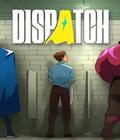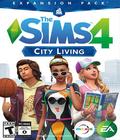The Sims 4: City Living is the third expansion to The Sims 4, and it's a game changer in the most literal use of the phrase. I've written before about my opinion of the base Sims 4 game and its empty feeling; City Living takes those criticisms to heart and eases them with the introduction of San Myshuno, a big city that feels as much like its own character as any of the sims that populate its skyscrapers.
If I had to pick a city to say San Myshuno was based on, I'd say New York City, if only for Myshuno Meadows Park in the center of the city and its resemblance to Central Park. The city feels very much like its own creature and not just a digital copy of any existing city. It consists of five neighborhoods: Arts Quarter, Fashion District, the previously mentioned park, Spice Market and Uptown.
The Arts Quarter and Spice Market have the least expensive (and quirkiest) apartments but also the most personality. The Arts Quarter is very bohemian and is home to artists and musicians. It hosts the Humor and Hijinks Festival, a team-based prank war, and the food stalls I normally find there are either Moroccan, Vietnamese, or Tea and Hot Drinks. Spice Market seems to be a global mash-up, with hints of various Asian nations and Central and South American countries. It hosts the Spice Festival, a food-based festival celebrating the city's many cultures, and the Flea Market, which is equal parts swap meet and scavenger hunt. The food carts are usually curry, ramen, or taco trucks.
The Fashion District is higher class, with more expensive apartments and the most easily obtainable penthouse. It hosts Geek Con, the Sims equivalent to E3 and Comic-con, and the Romance Festival, a celebration of flowers and love; its food stalls tend toward American and Filipino. Uptown is, of course, the most expensive part of town to live in, and all the richest and most powerful sims live there. It hosts no festivals and has gourmet food and cupcake stalls.
Regardless of the neighborhood, apartment living plays a big role in this expansion. The apartments, like all the people in the city, have their own quirks and personalities that can work with or against you in interesting ways. For example, in the cheaper areas of town, you may have an apartment that Needs TLC, where things seem to always need fixing or replacing, or Lively Neighbors that wake you up partying at all hours of the night. The more expensive ones may have traits like being On a Ley Line, increasing the chance of giving birth to twins, or Professional Kitchen, which means all food is of a higher quality. My personal favorite is Haunted, which gives you a surprise incorporeal roommate. Once you buy City Living, you have access to these traits in any town you choose to live in; all houses have them now, so you don't have to live in San Myshuno or an apartment to use this particular feature.
Apartments can be decorated and painted to your tastes, but you can't change the shape of the rooms or expand since you are just renting. For that, you'd need to save up and get yourself a penthouse. They are completely customizable like houses, though there are some limits. You can't have a basement, since you're still in a high rise – but you can totally have a pool that looks out over the city.
As always, new careers, skills, and traits are available as well. Become an art or film critic in the Critic Career, join the Political career to become President or to be a charity organizer, or join the Social Media career and either work public relations or become an internet personality. The new skills, basketball or singing, aren't used in any of these careers, but they're a fun way to pass the time and meet new sims. The Vegetarian trait makes your sim unable to stomach meat-based foods, the Jealous trait makes them overreact at any perceived move on their significant other. Finally, the City Native aspiration gives your sims a mood boost whenever they're in their own neighborhood, and it encourages you to explore the city.
All that aside, what City Living really gives you is a fuller game experience. Where the base towns felt like my sim alone on an island, San Myshuno is a living, breathing creature all on its own. My sim barely had time to step into her front door after moving in to her cheap Arts Quarter apartment (Quiet, Haunted) before her landlady called her up, asking if she wanted to go out for coffee. After returning home, I found several new neighbors at the door to welcome me to the building. They brought fruitcake and proceeded to drink all my coffee. I slept, and then I was dragged out to the Humor and Hijinks festival the next day, where someone literally laughed themselves to death. This was all before I'd had time to even go on my sim's smartphone to get her a job.
It keeps going like that, too. The Sims 4: City Living encourages you to be constantly out and doing things. In a word, it is refreshing. It's precisely what I felt was missing from the base game of The Sims 4 and from every expansion since. My only true criticism of it is that it's an expansion. I wish that the base game could've felt as real as City Living does, and I wish I didn't have to spend $40 on top of the $40 for The Sims 4. If you've been holding off on The Sims 4 until That One Expansion, City Living is the one.
Score: 9.3/10
More articles about The Sims 4: City Living











 In City Living players can discover everything the bustling city of San Myshuno has to offer, from the noisy neighbors and landlords that come only with apartment living, to exotic flavors and new destinations Sims can find just outside their door.
In City Living players can discover everything the bustling city of San Myshuno has to offer, from the noisy neighbors and landlords that come only with apartment living, to exotic flavors and new destinations Sims can find just outside their door.





























